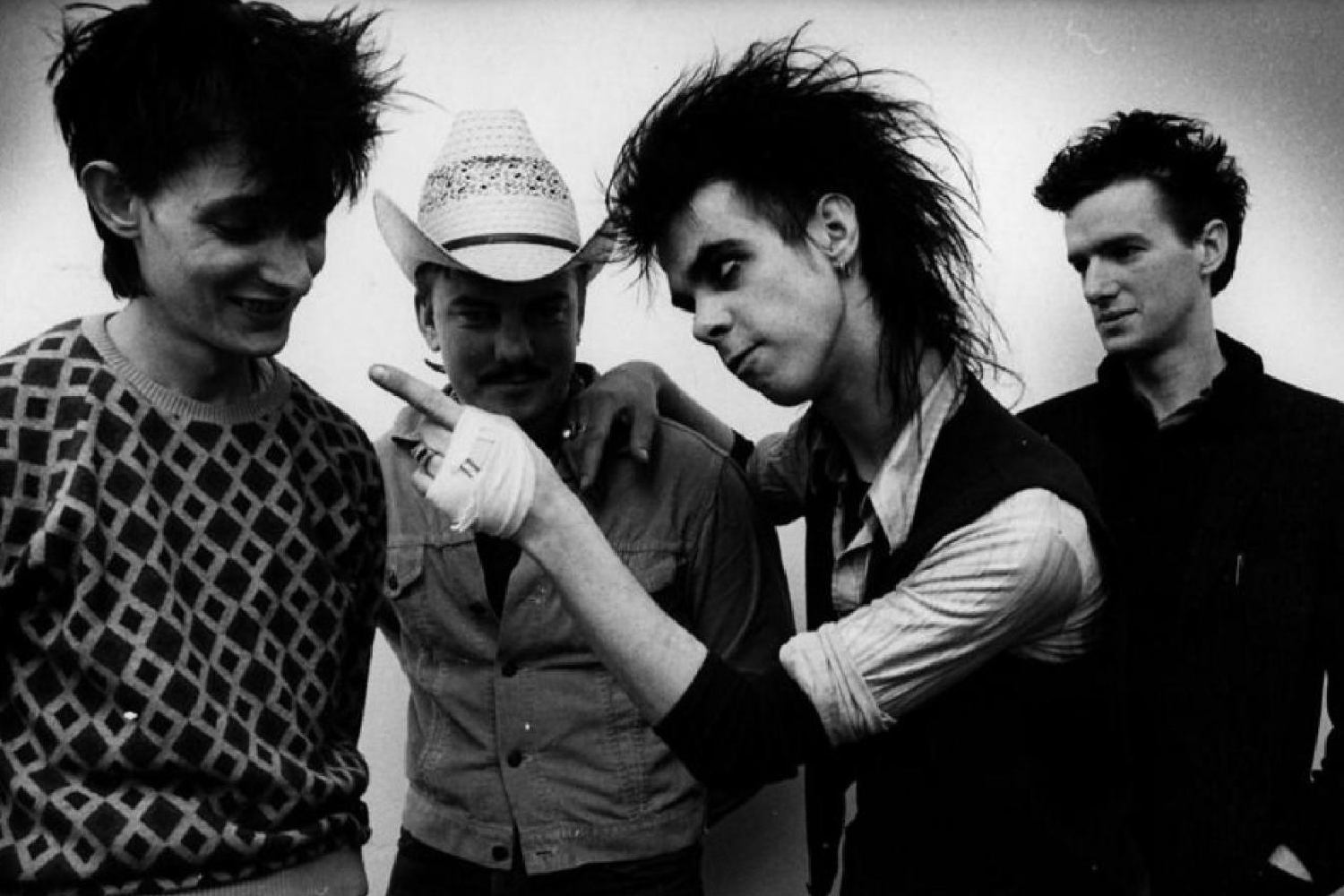Exploring Australia's unbridled early indie scene
After the Aussie rock boom of the ’60s and ’70s, a new force began to emerge from the depths of our local creative scene: post-punk.
Unenthused with the the typical conventions of rock and pop and inspired by the likes of The Cure, Television, Talking Heads and Joy Division, Australian groups began to experiment with unconventional compositions and angular instrumentation, subverting notions of genre to create some of the most compelling music of the era.
Read up on all the latest features and columns here.
Today, we’re digging deep into our record collections and trawling through YouTube to revisit some of the best Australian post-punk, new-wave, indie and no-wave deep cuts from the late ’70s and ’80s, many of which sound just as good today as they did back then. Happy listening!
‘Swing For The Crime’ — The Saints (1978)
“Smile as you sign on the line / Because life on your knees can be fun”, snarls frontman Chris Bailey over a sea of sonic lawlessness. The first track from their 1978 LP Prehistoric Sounds, ‘Swing For The Crime’ is a scathing commentary on how manipulative industry executives reel in overzealous, “sycophantic” young artists who hope to make it big.
After relocating to London, Bailey and fellow frontman Ed Kuepper strove to incorporate a greater sense of structural intricacy to their songs, as well as an emphasis on innovative production. Pairing a rumbling Bo Diddley beat with a biting brass arrangement, The Saints deliver us their trademark vexation, albeit in an even more incisive manner than before.
‘The Nips Are Getting Bigger’ — Mental As Anything (1979)
This song’s about getting shitfaced, pretty much. That, in itself, is nothing special. But what makes this song lyrically relatable is the way it deals with why we drink, and the purpose it serves. “Just a couple more made me feel a little better” — I, for one, occasionally find myself thinking as such.
Martin Plaza vacillates about his drinking in the third verse, and relays a feeling most of us have had in our youth: “Sometimes I wonder what all these chemicals are doing to my brain/Doesn’t worry me enough to stop me from doing it again”.
Plaza unequivocally shines a light on that internal tug of war many of us experience: preserving our physical/mental health versus indulging in our hedonistic tendencies.
‘King Ink’ – The Birthday Party (1981)
A standout cut from one of the most acclaimed post-punk records of all time, ‘King Ink’ is jarringly abrasive, and at times, downright evil-sounding.
Between Nick Cave’s guttural and borderline psychotic vocal performance, Rowland S. Howard’s searing guitar and that lurching bassline from Tracy Pew, ‘King Ink’ reflects the dark spiral of The Birthday Party as each member battled their own drug and alcohol induced demons, and is a morbidly fascinating artistic exercise that teeters on the brink of chaos.
Prayers On Fire is a thrilling listen from start to finish, and certainly boasts no shortage of nihilistic compositions, but ‘King Ink’ is undeniably its most twisted and under-appreciated offering.
‘Wedding Cake Island’ — Midnight Oil (1980)
Midnight Oil weren’t known for their instrumentals, but this tune honestly makes you wonder why they didn’t write more.
Written by guitarists Jim Moginie and Martin Rotsey for their 1980 EP Bird Noises, ‘Wedding Cake Island’ features some wholesome jangly guitar playing that predates the likes of R.E.M and The Smiths by a number of years.
Moginie’s simple yet compelling lead playing is a highlight, not to mention his use of the theremin — I dare say even Brian Wilson would be proud of this one.
‘Sleeping Beauty’ — Divinyls (1985)
One of the six singles off their 1985 LP What a Life!, ‘Sleeping Beauty’ didn’t garner anywhere near the same level of commercial success as other album singles such as ‘Pleasure and Pain’.
This is a confusing thought to grapple with once you actually listen to how well-composed this song is, on many levels. For starters, legendary frontwoman Chrissy Amphlett gives us a vocal performance for the ages, while Mark McEntee’s mellow guitar and organ parts unobtrusively bring everything together.
Perhaps the best thing about this tune is its structure — all the clever transitions and quirky chord changes here really highlight the songwriting talent of Amphlett and McEntee. A true unsung classic from the Divinyls.
‘Kathy Knows’ – The Triffids (1986)
A seminal cut from their 1986 full-length In The Pines, ‘Kathy Knows’ might be one of the most menacing tunes on this list. ‘Kathy Knows’ follows a stark narrative filled with despair, infidelity and paranoia, embellishing The Triffids’ folk and country inspired sound with a dark demeanour and ominous instrumentation.
There’s a lot to be said about the lo-fi production of this track, with The Triffids opting to record In The Pines in a shearing shed in the WA outback with an eight-track recorder and a budget of $1190: $340 of which was spent on alcohol, $310 on food, $300 on recording equipment hire and the rest petrol – evidently, a recipe for success.
‘Mexican Postcard’ – The Go-Betweens (1988)
The Go-Betweens are now recognised as one of the most influential indie groups of the decade, and it’s deep cuts like ‘Mexican Postcard’ that prove why.
Released as the B Side to ‘Was There Anything I Could Do?’, ‘Mexican Postcard’ is both a master stroke in production and songwriting, with jangly guitars, plenty of shimmering reverb and smooth harmonies creating a soundscape that gleams as vividly as the the lyrical subject of a Mexican summer.
It’s not super post-punk, but it is oddly unnerving how modern this tune sounds despite being released over thirty years ago. These guys really were something else.
‘Re-Funkt’ – Essendon Airport (1981)
Released around the peak of the international no-wave movement, ‘Re-Funkt’ sees Essendon Airport wave their freak flag high, amalgamating the sounds of Talking Heads, The Lounge Lizards and Gang Of Four to make for an absurd and strangely addictive sonic trip that could have very easily appeared on a modern record like King Krule’s The OOZ.
Between its piercing drum groove, edgy synth bass, angular Afrobeat guitars and liquid saxophones, ‘Re-Funkt’ is one of the most freakish sounding songs to have ever come out of the Victorian capital.
An absolute treat from one of the most compelling Melbourne groups of this era.
‘Crush The Lily’ – Chad’s Tree (1985)
Released at the peak of new-wave in the mid ‘80s, ’Crush The Lily’ was the debut single from Western Australian outfit Chad’s Tree, featuring future Blackeyed Susans member Rob Snarski on guitar and his brother Mark on vocals.
With its creeping bassline, spacey electric pianos and moody guitars, ‘Crush The Lily’ sounds like a downcast B-Side from The Cure, while the song structure and melody are strikingly reminiscent of tracks from John Frusciante’s 2001 solo effort To Record Only Water For Ten Days.
The music video is also peak 3am Rage: expect trippy visual effects, poorly super-imposed green screen footage and plenty of vacant stares.
‘Quasimodo’s Dream’ — The Reels (1981)
Formed in Sydney in the late ‘70s, The Reels were no strangers to commercial chart success. Their renditions of Herb Alpert’s ‘This Guy’s In Love With You’ as well as Creedence’s ‘Bad Moon Rising’ reached #7 and #11 respectively on the Kent Music Singles Charts in the mid ‘80s.
Before these releases, however, came ‘Quasimodo’s Dream’ — a song whose timeless originality and vibrant instrumentation surely outweigh its surprisingly underwhelming chart performance. The Reels’ infusion of eerily chiming synths, melodic bass playing and layered vocal harmonies still deserve plaudits, nearly 40 years on from its release.
Revisit some of our favourite Australian rock deep cuts from the ’70s.

